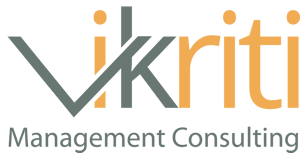
People Analytics in Healthcare
Authored by Ayesha Rajan, Research Analyst at Vikriti Management Consulting
Introduction
When thinking of how to use analytics to improve a business there are several things that come to mind – financial analytics and marketing analytics are a couple forms that come to mind. However, human resources is not often thought of when considering how to use analytics to improve a business. In reality, HR analytics, more commonly known as people analytics, is only becoming more prevalent in business practices. People analytics is “defined as the deeply data-driven and goal-focused method of studying all people processes, functions, challenges, and opportunities at work to elevate these systems and achieve sustainable business success.”
While human resources often makes decisions qualitatively, people analytics helps employers make better decisions when it comes to both hiring and retention of employees by measuring their performance in a way that focuses on their quantitative success which ensures a more well rounded picture of an employee. One of the reasons that people analytics is becoming more popular recently is because the studies and tests used to develop the formulas and algorithms for companies often had to go through years of long term testing. Now that many of these tests are complete and companies are bringing their products to market, we can take a deeper dive into this field and how it is especially important to healthcare.
Discussion
The goals of people analytics goes beyond the two most important ones, however, decreasing turnover and increasing retention of high performing employees are the most valuable deliverables people analytics can offer a company. Given that labor costs are often the highest expense for many companies, this has a direct impact on profitability. The field of healthcare has many unique challenges when it comes to utilizing people analytics tools. For example, Deloitte reports “Bedside registered nurse (RN) turnover increased from 16.4 percent in 2014 to 17.2 percent in 20151, and newly hired nurses are leaving faster than they once did.” When combined with the fact that “55 percent of the RN workforce [is of] age 50 or older,” the question of how to increase retention of talented employees is brought up. Without people analytics, this may not have been caught and hospitals could have found themselves with a shortage of nurses but with this data they can now work on creating incentive plans to encourage employees to stay long enough to decrease the chances of a shortage. Additionally, healthcare is seeing more technology introduced to the field through the form of supply chain analytics, revenue management systems, disease prediction tools, wearable technologies and more. However, many human resources managers may not be familiar with how to measure the talent or success of a group of employees they have not previously worked with in this setting. Again, people analytics can provide some more insightful data on the ROI of an individual or team.
Conclusion
People analytics comes in the forms of measurements and algorithms that can add a quantitative method to measuring the success of employees who were previously only evaluated through qualitative means. In a hospital setting, where there are reports of high levels of waste at nearly every level, decreasing labor costs or increasing the return on investment of individuals or teams is incredibly important. Furthermore, this is important for patients as well because people analytics not only saves labor costs but increases the quality of the employee base which means better care for those coming into the hospital.
